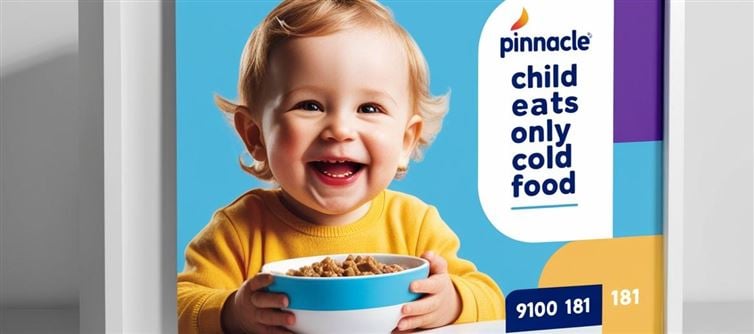
📍 Location: Mysuru
🧠 Service: Feeding Sensory Profile / Autism Spectrum / OT & Behavioral Therapy
📞 Call to Action: AbilityScore©® Feeding Profile + TherapeuticAI©® Regulation Plan
“She Ate From The Fridge. Not The Stove.
Refused Everything Hot.
Screamed If Her Rice Was Warm.
Only One Texture. One Spoon. One Bowl.
Every Single Day.”
Ishita, 4 years old, looked healthy.
But:
- Only ate cold curd-rice.
- From one specific blue bowl.
- Using a single plastic spoon.
- No chapati. No dal. No variety.
If something changed?
- Meltdown.
- Food refusal.
- Starvation for up to 14 hours.
“We thought she was fussy.
Then we thought we failed as parents.
Finally — we learned she was hurting in ways we couldn’t see.”
🧠 Why Texture & Temperature Aversion Is A red Flag
At Pinnacle® Mysuru, feeding therapists and pediatric OTs explain:
“Children on the autism spectrum often develop extreme sensory rigidity around food —
not out of taste preferences, but because their brains cannot tolerate certain temperatures, textures, smells, or consistencies.”
Clinical red flags:
- Eats only specific-temperature foods (only cold or only dry)
- Cries, gags, or throws up when new textures are introduced
- Eats same food daily without variation
- Uses same utensil, bowl, and seating
- Refuses family meals and social eating
From our experts:
“You’re not dealing with choosiness.
You’re dealing with neurological distress — disguised as stubbornness.”
📞 The Day They Ran Out Of Curd — And She Went To Bed Hungry
Her parents tried everything:
- Hiding warm food inside cold
- Offering different plates
- Using rewards
- Pleading
But one night, when the fridge was empty:
- She refused every meal.
- Cried for two hours.
- Slept empty.
- Whispered, “Too hot. Hurts tongue.”
“She wasn’t manipulating us.
She was protecting herself — from the sensation her brain couldn’t handle.”
They called 9100 181 181 the next morning.
The counselor said:
“It’s not your fault.
It’s not her fault.
Let’s help her feel safe with food — one step at a time.”
They booked a free AbilityScore©® Feeding Sensory Profile Screening.
📊 Ishita’s AbilityScore©® Sensory-Food Profile
- Temperature Flexibility: 🔴 red (430/1000)
- Texture Tolerance: 🔴 Red
- Meal Transition Readiness: 🔴 Red
- Oral Motor Regulation: 🟡 Yellow
- Visual Presentation Tolerance: 🔴 Red
She wasn’t controlling food.
She was being controlled by how food felt in her body.
🤖 How TherapeuticAI©® Helped Her Rebuild A Relationship With Food — Without Trauma
Her therapy wasn’t about forcing food.
It was about giving her body, mouth, and mind the time to trust again.
Therapy plan:
- Cold → Room Temp → Warm progression over 6 weeks
- Texture stepping ladder: Smooth → Slightly textured → Mixed
- Play-based food tolerance games (“Make food friends”)
- “Food is safe” environment: no surprise meals, no pressure
- Parent coaching on emotional regulation around food
By week 5:
- Ishita tasted mashed potato at room temperature
- Accepted a new spoon
- Smiled when served dal — and touched it without fear
“She didn’t become adventurous.
She became less afraid.
And for us, that was everything.”
💬 What Her parents Want The World To Know
“We begged.
We bribed.
We broke down.
But none of that helped — until Pinnacle® showed us her food fears weren’t in her mouth.
They were in her mind.”
🌍 This Autism Awareness Month — Stop Calling It Picky Eating
If your child:
✅ Eats only cold food
✅ Avoids warm textures, new consistencies
✅ Gags or panics at temperature change
✅ Refuses food from others or new bowls
…it’s time to screen their sensory feeding profile — and help them eat with peace, not pressure.
📞 Book Your Child’s Free Feeding Sensory Screening in Mysuru
📞 Call the Pinnacle® National Autism Helpline: 9100 181 181
🌐 www.Pinnacleblooms.org
📍 Mysuru | Mandya | Hassan | Tumakuru
✅ Free AbilityScore©® Feeding Aversion Report
✅ TherapeuticAI©® Temperature + Texture Desensitization Plan
✅ kannada + english Feeding Therapists
✅ Parent Food Coaching Toolkit
⚠️ Disclaimer
This article is for awareness only. For clinical guidance, contact a licensed healthcare provider or the Pinnacle® national autism helpline at 9100 181 181.




 click and follow Indiaherald WhatsApp channel
click and follow Indiaherald WhatsApp channel